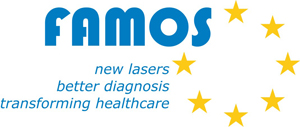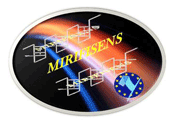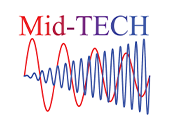Cancer awareness
 Dear 16-year old me
Dear 16-year old me
A powerful cancer awareness video (5 min) from The David Cornfield Melanoma Fund (Canada)
 Cancer Research UK-Malignant melanoma
Cancer Research UK-Malignant melanoma
Information about melanoma, including symptoms and causes, tests to diagnose melanoma, treatment for early melanoma (surgery) and advanced melanoma (chemotherapy, biological therapy, radiotherapy, and surgery) and current research.
Related FP7 and Horizon 2020 projects
BILOBA
Bloch electromagnetic surface waves for early cancer diagnosis
BILOBA plans to develop and pre-clinically validate a multifunctional point-of-care platform that is capable of performing real-time cancer biomarker detection in a tandem configuration. Such configuration will utilise the well-known label-free detection based on the resonance shift, and the spectral analysis of enhanced fluorescence emitted by biomolecules immobilized on the surface. Utilizing both labelled and label-free analysis on the same sensor system can increase the sensitivity and reliability of optically read-out surface bound assays.
 CLARITY
CLARITY
Compact uLtrA-efficient mid-infRared photonIc sysTems based on low noise quantum cascade laser sources, wide band frequencY converters and near-infrared photodetectors
This project, which finished in Aug-2014, worked on the development of quantum cascade lasers with sub-shot noise performance, mid- to near-IR converters in silicon waveguides and soft glass fibres, and implementation of photonic integrated circuits based on III-V and group IV materials.
FAMOS
Functional anatomical molecular optical screening
FAMOS will develop a new generation of light sources to radically transform bio-photonic technologies for point-of-care diagnosis and functional imaging. FAMOS addresses optical imaging from molecular through (sub-) cellular to individual organs. Combinations of some techniques will offer multimodal solutions to diagnostic needs that will exploit and enhance the benefits of each modality. FAMOS technologies have wide applicability, but the specific focus is on diagnosis in ophthalmology and oncology. NKT Photonics is a partner in both FAMOS and MINERVA.
 FLAIR
FLAIR
FLying ultrA-broadband single-shot Infra-Red sensor
This H2020 project includes MINERVA partner NKT Photonics. The outline of the project is as follows: a high-performance air sampling sensor based on cutting-edge photonic technology is mounted on an UAV (drone) for pervasive and large area coverage high-specificity and high-sensitivity (ppbv) air quality sensing. Operating in the two atmospheric windows of 2-5 μm and 8-12 μm wavelength, FLAIR can detect minute traces of molecules in complex gas mixtures from their characteristic IR absorption fingerprints and provide real time information to the operator.
![]() LANIR
LANIR
Label free nanoscopy using infrared
This project proposes a novel imaging tool Infra Red Nanoscope (IRN) that will significantly improve the lateral resolution of IR microscopy on a table-top set up from the current state-of-the-art of 100 micron to 70 nm. It will also perform 3D imaging at a resolution of 500 nm, which is currently not possible in IR microscopy. A detailed methodology and instrumentation plan exists to implement a ready to commercialise table-top, nanoresolution, IRN. The instrument offers easy operation, flexibility and label free imaging of structure and chemistry that will stimulate new research in cancer treatments and early stage diagnostics of Alzheimer’s disease.
MIRIFISENS
Mid-infrared innovative lasers for improved sensing of hazardous substances
MIRIFISENS will study Tunable Diode Laser Spectroscopy (TDLS) using Quantum Cascade Lasers (QCL) covering a broad portion of the mid-IR spectral range (3-12 µm). The project will exploit state-of-the-art micro and nano-fabrication techniques. The major technology achievements proposed will address the issues of sensitivity & selectivity, multi-gas capabilities, compactness, efficiency and cost effectiveness as specified by a number of selected safety & security applications. MIRIFISENS will deliver a new class of sensors with superior tuneability, better portability and extended detection capabilities, changing radically the current landscape of MIR chemical sensing spectroscopy.
 MYCOSPEC
MYCOSPEC
Novel infrared spectroscopic tools for mycotoxin determination in foodstuffs for increased food safety
The MYCOSPEC project aims to develop an innovative tool for on-site mycotoxin diagnosis of fungal diseases at the surface of foods and in liquid foodstuffs using infrared spectroscopic fingerprinting techniques. The envisaged approach will enable the development of a compact yet highly sensitive tool, which will ensure that larger volumes of the foodstuffs can be probed, sensitively detected, and quantified.
SAFETYPACK
Innovative non- intrusive laser gas sensors on food production for real time quality/safety in line control of food packaging and bottling systems
(FP7) SAFETYPACK aims the realisation of a new contactless non-intrusive laser gas sensors that will provide the food manufacturing industry with a real time in line control technology that can perform quality and safety control of a wide range of sealed food. Like MINERVA, SAFETYPACK investigates novel spectroscopy using wavelengths beyond the visible.
WideLase
Monolithic Widely Tunable Interband Cascade Lasers for Safety and Security
WideLase is a collaborative project which brings scientists and engineers from across Europe to propose novel monolithic concepts for electrical tuning which will be combined with interband cascade material to realize laser sources with wide tuning range for safety and security applications in the 3.3 to 7.0 μm wavelength region. These sources will be utilized for three different important safety and security applications: remote detection of alcohol vapour in exhaled breath, remote monitoring of formaldehyde and hydrocarbon leak detection.
Other relevant links
 MIRTHE
MIRTHE
Center for Mid-IR Technologies for Health and the Environment
MIRTHE is a large US National Science Foundation Engineering Research Center headquartered at Princeton University, with partners City College New York, Johns Hopkins University, Rice, Texas A&M, and the University of Maryland Baltimore County. MIRTHE’s goal is to develop mid-IR (3-30 µm) optical trace gas sensing systems based on new technologies such as quantum cascade lasers or quartz enhanced photo-acoustic spectroscopy, with the ability to detect minute amounts of chemicals found in the environment or atmosphere, emitted from spills, combustion, or natural sources, or exhaled.
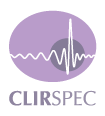 CLIRSPEC
CLIRSPEC
The International Society for Clinical Spectroscopy
The International Society for Clinical Spectroscopy (CLIRSPEC) is a non-profit organisation, constituted in 2015. The Society exists to act as a platform for those individuals, teams and organisations wishing to promote the translation of spectroscopy into the clinical environment, for the general benefit of patients; for example, to improve patient diagnosis and prognosis.
 EMS
EMS
European Microscopy Society
The European Microscopy Society is composed of individual members and corporate members. Any microscopist, whether or not a member of a national society for microscopy in Europe, is eligible for membership and any company producing and/or selling products used in the field of microscopy, can become a corporate member. The Society follows a number of European projects on its website.
IRDG
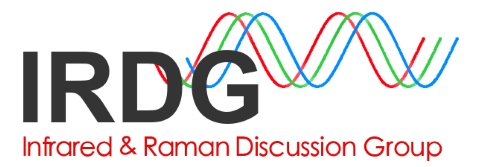 The Infrared and Raman Discussion Group
The Infrared and Raman Discussion Group
The Infrared and Raman Discussion Group, usually referred to as the IRDG, was formed in 1950 and is one of the oldest independent spectroscopy groups in the UK. It is the national organisation which caters for all who are interested in the theory, practice and teaching of infrared and Raman spectroscopy. Members of the group come from industry, government and academic institutions.
Mid-TECH
Mid-TECH is a Horizon 2020 Innovative Training Network (ITN). It aims to gather the best European academic and industrial partners to show that in a combined effort, both technological short comings can be overcome paving the way for novel instrumentation for industry and society. Key elements are novel semiconductor-based Quantum Cascade Lasers (QCLs), rugged mid-IR Optical Parametrical Oscillators combined with novel, record “low noise” mid-IR upconversion detection and imaging. These two building blocks will be implemented for cancer diagnostics, for combustion analysis and absorption/DIAL spectroscopy.


